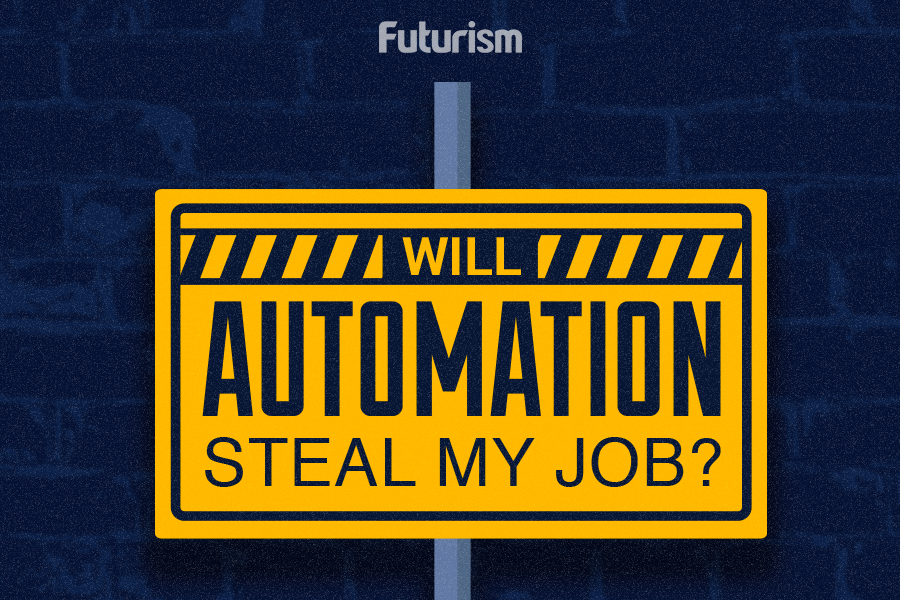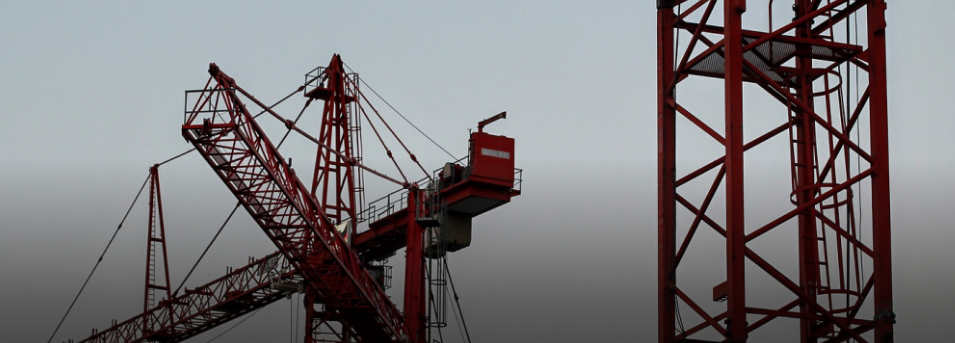Robots Are Preparing to Fill 200,000 Vacant Construction Jobs
Though many fear the unemployment that could follow the widespread adoption of automated systems, they could be a welcome addition to the construction industry, which currently suffers from a lack of workers and stagnant productivity levels.
[edit] READY FOR DISRUPTION
Automation has long been considered the harbinger of future unemployment, and experts have predicted that the widespread adoption of artificially intelligent (AI)software and smart machines could lead to thousands or even millions of people losing their jobs.
 Click to View Full Infographic
Click to View Full Infographic
However, that may not be the case in the construction industry. In fact, with a growing shortage in labor, it’s one sector that’s particularly well-suited for an automation takeover.
According to a report released by McKinsey & Company earlier this year, the world of construction suffers from productivity levels that haven’t really gone up much since 1945. The report also showed that 98 percent of huge construction projects end up going over budget and that the industry has proven resistant to technological upgrades. Furthermore, data from the Bureau of Labor Statistics shows that almost 200,000 construction jobs were unfilled in the United States alone as of February 2017.
To sum, a lingering inefficiency seems to plague the industry, and it could be remedied through the use of automated systems and machines.
[edit] NEW JOBS, BETTER LIVES
A number of AI-powered systems that could help alleviate the construction industry’s woes are currently in development. These include a mobile construction worker, as well as a mobile 3D-printer, both of which are capable of adjusting to their immediate environment. Almost always, these AI construction systems are able to finish their tasks more efficiently and quickly than their human counterparts, so construction seems to be a nice fit for automation.
Some critics are wary of this kind of intelligent automation because they view it as an attempt to replace human workers. While it’s true that automated systems might cause some unemployment, they could also lead to the creation of new jobs that we haven’t really needed before, such as providing maintenance for these automated systems.
Still others argue that automation, coupled with universal basic income (UBI), would free people to pursue other meaningful endeavors, such as content creation. This pairing could also give people time to learn more and to tackle larger issues, so before we dismiss automation as a negative, we must consider all possibilities.
References: Recode, U.S. Bureau of Labor Statistics, McKinsey & Company
Please find the original article here .
- Written by
Dom Galeon, Writer , Futurism
--Future of Construction 10:19, 30 Aug 2017 (BST)
Featured articles and news
RTPI leader to become new CIOB Chief Executive Officer
Dr Victoria Hills MRTPI, FICE to take over after Caroline Gumble’s departure.
Social and affordable housing, a long term plan for delivery
The “Delivering a Decade of Renewal for Social and Affordable Housing” strategy sets out future path.
A change to adoptive architecture
Effects of global weather warming on architectural detailing, material choice and human interaction.
The proposed publicly owned and backed subsidiary of Homes England, to facilitate new homes.
How big is the problem and what can we do to mitigate the effects?
Overheating guidance and tools for building designers
A number of cool guides to help with the heat.
The UK's Modern Industrial Strategy: A 10 year plan
Previous consultation criticism, current key elements and general support with some persisting reservations.
Building Safety Regulator reforms
New roles, new staff and a new fast track service pave the way for a single construction regulator.
Architectural Technologist CPDs and Communications
CIAT CPD… and how you can do it!
Cooling centres and cool spaces
Managing extreme heat in cities by directing the public to places for heat stress relief and water sources.
Winter gardens: A brief history and warm variations
Extending the season with glass in different forms and terms.
Restoring Great Yarmouth's Winter Gardens
Transforming one of the least sustainable constructions imaginable.
Construction Skills Mission Board launch sector drive
Newly formed government and industry collaboration set strategy for recruiting an additional 100,000 construction workers a year.
New Architects Code comes into effect in September 2025
ARB Architects Code of Conduct and Practice available with ongoing consultation regarding guidance.
Welsh Skills Body (Medr) launches ambitious plan
The new skills body brings together funding and regulation of tertiary education and research for the devolved nation.
Paul Gandy FCIOB announced as next CIOB President
Former Tilbury Douglas CEO takes helm.
UK Infrastructure: A 10 Year Strategy. In brief with reactions
With the National Infrastructure and Service Transformation Authority (NISTA).
























